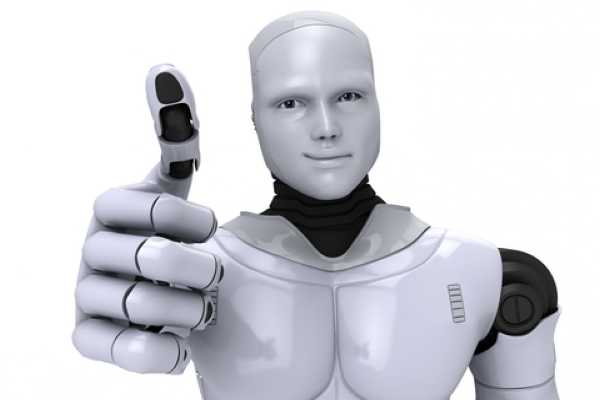Published on the 29/05/2017 | Written by Adam Howatson

Technology has consistently made life better for people; it’s not going to be different this time, writes Adam Howatson…
The rapid pace of technological change today has been heralded as the “fourth industrial revolution”. New solutions powered by artificial intelligence (AI), robotics and machine learning are enabling machines to handle processes that once required human decision-making. Just as mechanical muscle lowered the demand for physical labour in the first industrial revolution, today cutting-edge technology is reducing the demand for human intervention. The “migration” of tasks from humans to software and machines has been evident for a number of years. From ATMs to automated check-in and passport gates at airports, technology has been replacing humans across multiple, relatively simple and repetitive tasks. Today, this transformation is allowing much more complex tasks to move from human to machine speed, and is taking place across industries that, historically, have remained largely untouched by machine intervention. Most recently, AI and cognitive systems have been deployed in legal discovery, insurance applications, underwriting and claims processing, and the delivery of financial investment advice. In healthcare, telemedicine can allow diagnosis and monitoring without the need to physically see a clinician, and can even enable a surgeon to operate from another hospital or country, which will prove life-saving for many remote communities in Australia, and around the world. While human involvement is not entirely removed in these roles, it is clear that some jobs that we have long understood as “human” are being heavily impacted by technology. According to McKinsey, the story around automation technologies like robotics and machine learning is more nuanced than we think. Automation will eliminate very few occupations in the next ten years. It will, however, impact part of nearly every job, depending on the work entailed. For example, Forrester predicts that 25 per cent of tasks across every job category will be automated by 2019.[1] PwC suggests the magnitude of change caused by digital disruption on the whole will be even greater; expecting it to affect 44 per cent, or 5.1 million Australian jobs, in the next 20 years. These technologies should be viewed as opportunities to transform, rather than replace, the role of the human worker. The automation option A key benefit of digital transformation is that it releases humans from the confines of mundane work and opens up more opportunity for people to spend time thinking—to conceive of technology that can add more value to everyday life. The time gained through automation can be used to innovate, germinate ideas, and conceive new processes fueled by the kind of thinking that only happens when our minds have time to wander. The beginning of a sweeping societal change? The endurance of creative and leadership roles Going forward, there will be more roles for people who are creative, those who have really honed their ability to think and consider a complete landscape of facts to come up with the right path. Today’s biggest ideas are not just the result of organising data or understanding a spreadsheet; they’re the culmination of someone’s life experience: what they hear, what they read, who they converse with, and how they process that information within their very human brain to come up with the next big thing. While algorithms may automate decision-making, it won’t be easy to replace leaders who can navigate fast-paced, intense change. At the end of the day, you may wonder if a machine could do your job. And the answer is that it could probably do some of it. And that’s okay, because automation will free us up to do more of the thinking required to come up with what’s next, perhaps with the help of a new robot friend. [1] J. P. Gownder et al., August 24, 2015, ‘The Future Of Jobs, 2025: Working Side By Side With Robots’ Adam Howatson is CMO at OpenText.
New opportunities for automation continue to appear, as mechanisation, automation, AI, and robotics continue to replace and transform human roles. But it’s not all doom and gloom. As technology develops and a whole raft of “traditional” roles are replaced, new jobs will be created in the transition. Jobs that play to the heart of what make us human—creativity, innovation and strategic thought.
The World Economic Forum, as well as economists, analysts, and labour organisations predict a wave of job losses coming from the surge in AI, robotics, and other data-driven technologies. Though timing is not certain, one projection says we could expect a net loss of 7.1 million jobs over the next five years in 15 leading countries—the countries that make up approximately 65 per cent of the world’s total workforce. Two million of the jobs lost will be offset by the creation of new positions. These will be the roles that support and foster the new wave of innovation beyond what we see as credible or possible today.
As digital technologies take hold, there will be a greater need for individuals who can build, develop and make sense of these changes. Developers, programmers, scientists, and technologists will—more than ever—be required to drive forward the accelerating pace of change. This disruption requires deep, creative thinking by economists, lawyers, and policy makers who can interpret how governance, intellectual property, and society at large will have to adapt.




























